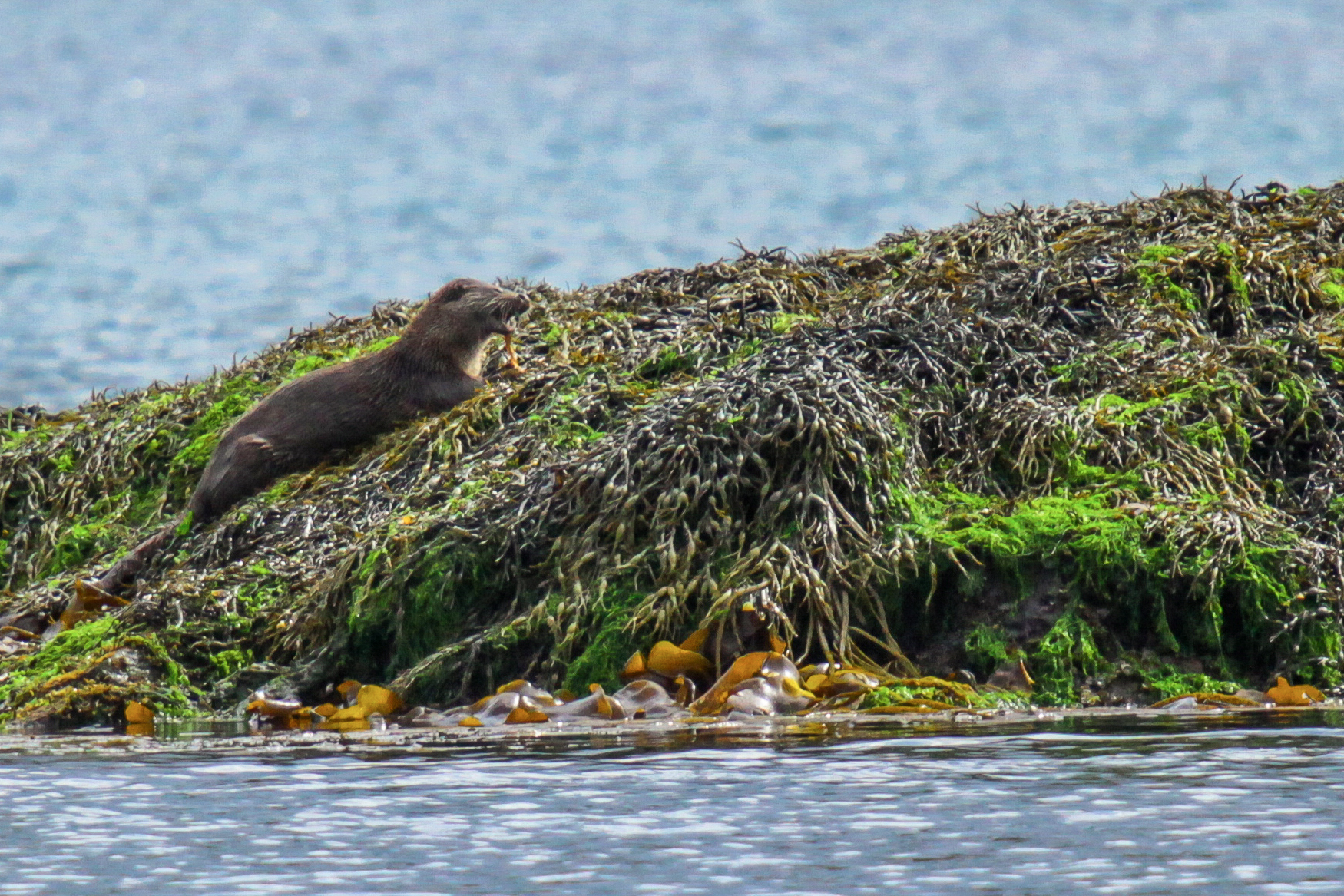A marten redesigned for an aquatic lifestyle
Water marten
Within the larger group of martens and badgers, otters are an evolutionary recent addition. They are most closely related to the subgroup of what we call martens and weasels, but they distinguish themselves from their terrestrial relatives by adaptations for an aquatic lifestyle. Their streamlined body, powerful legs with webbed feet and strong tail make them ideal swimmers.
Propulsion under water is mainly achieved by kicking motions of the hind legs, but when accelerating fast, both the abdomen and tail, which is flattened at the base, join in to generate extra speed.
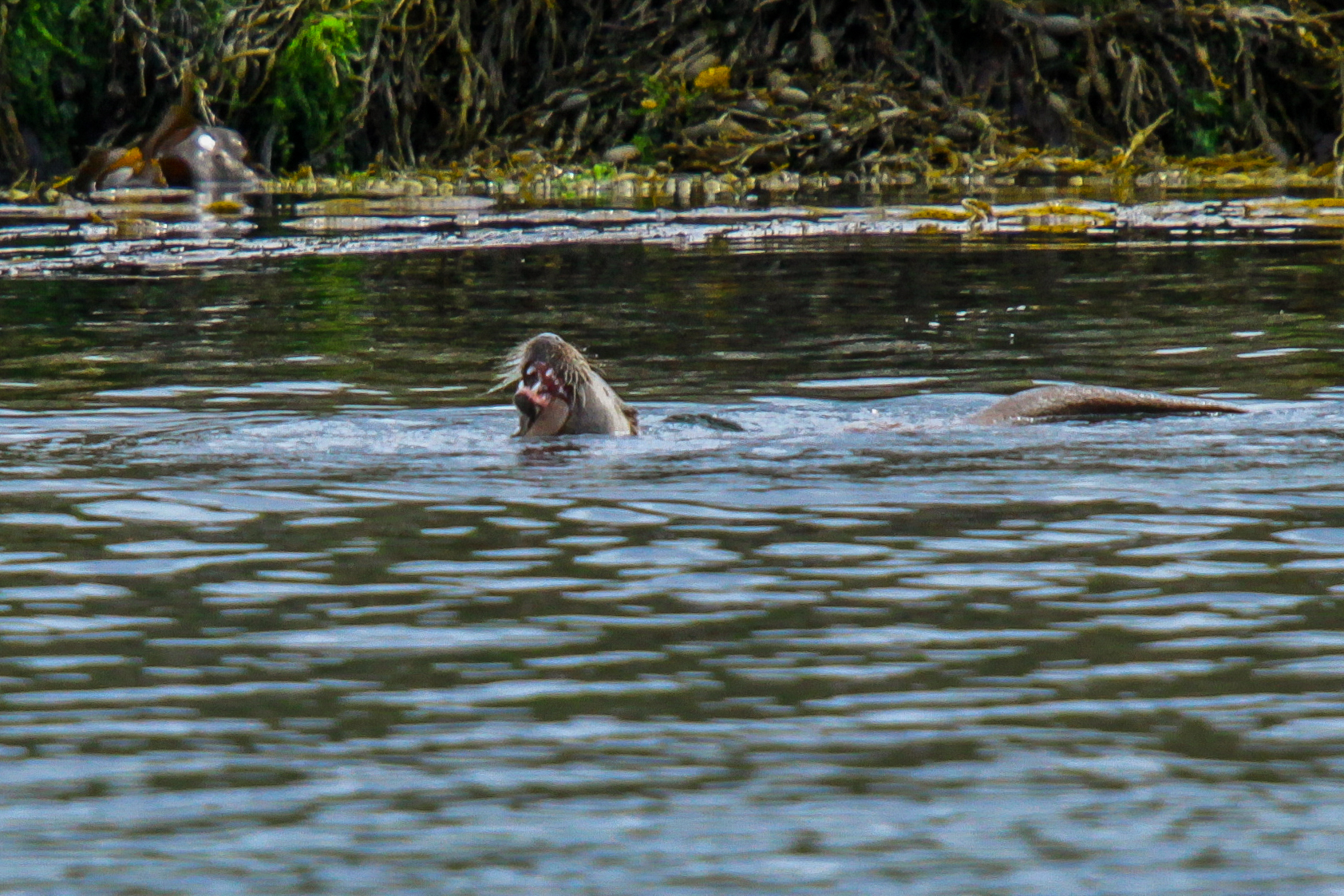
Their nose, eyes and ears are placed on top of the head, allowing them to observe their surroundings while swimming at the surface. Tiny skin flaps above the ears close the ear openings during the dive to prevent water to flow in.
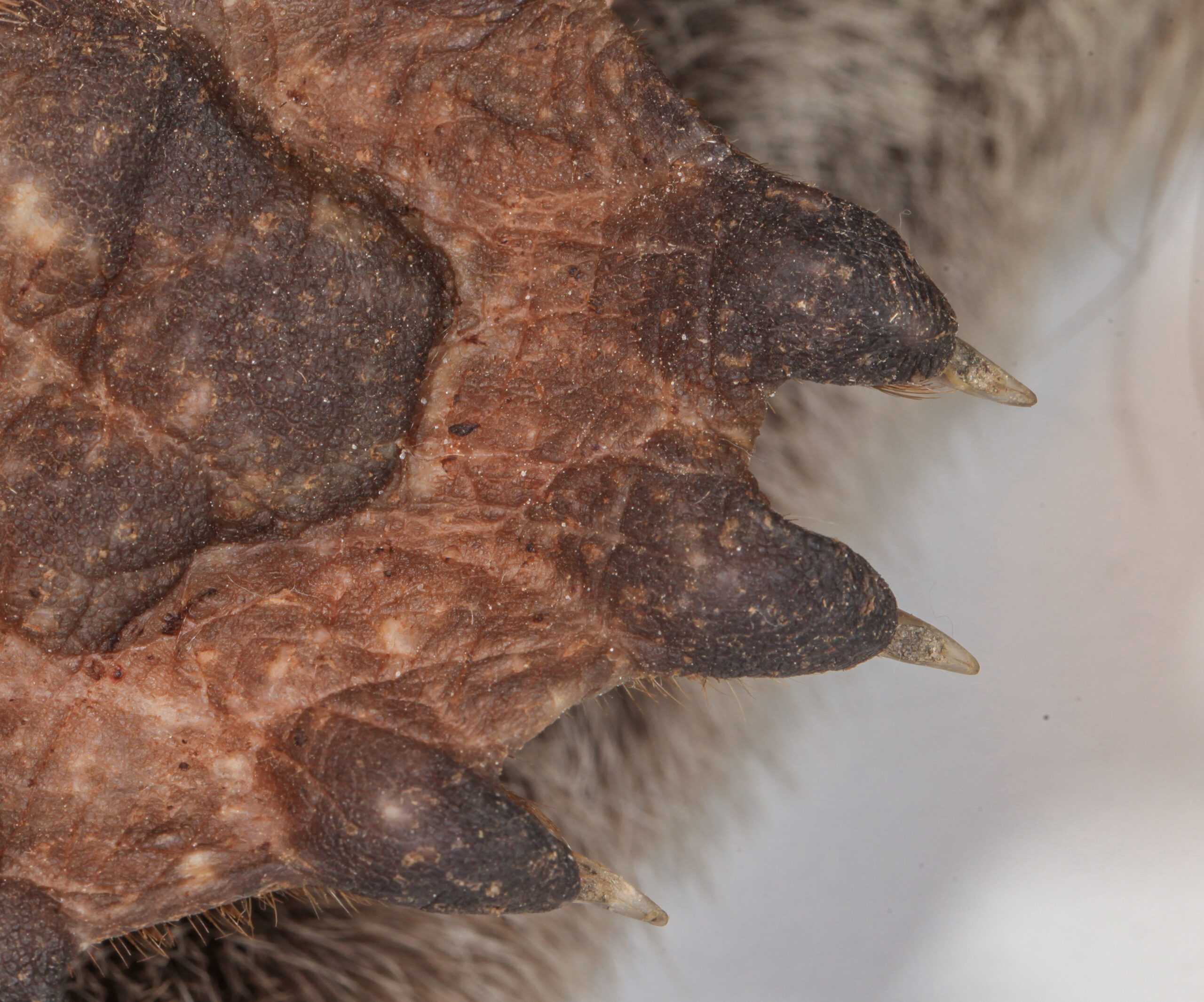
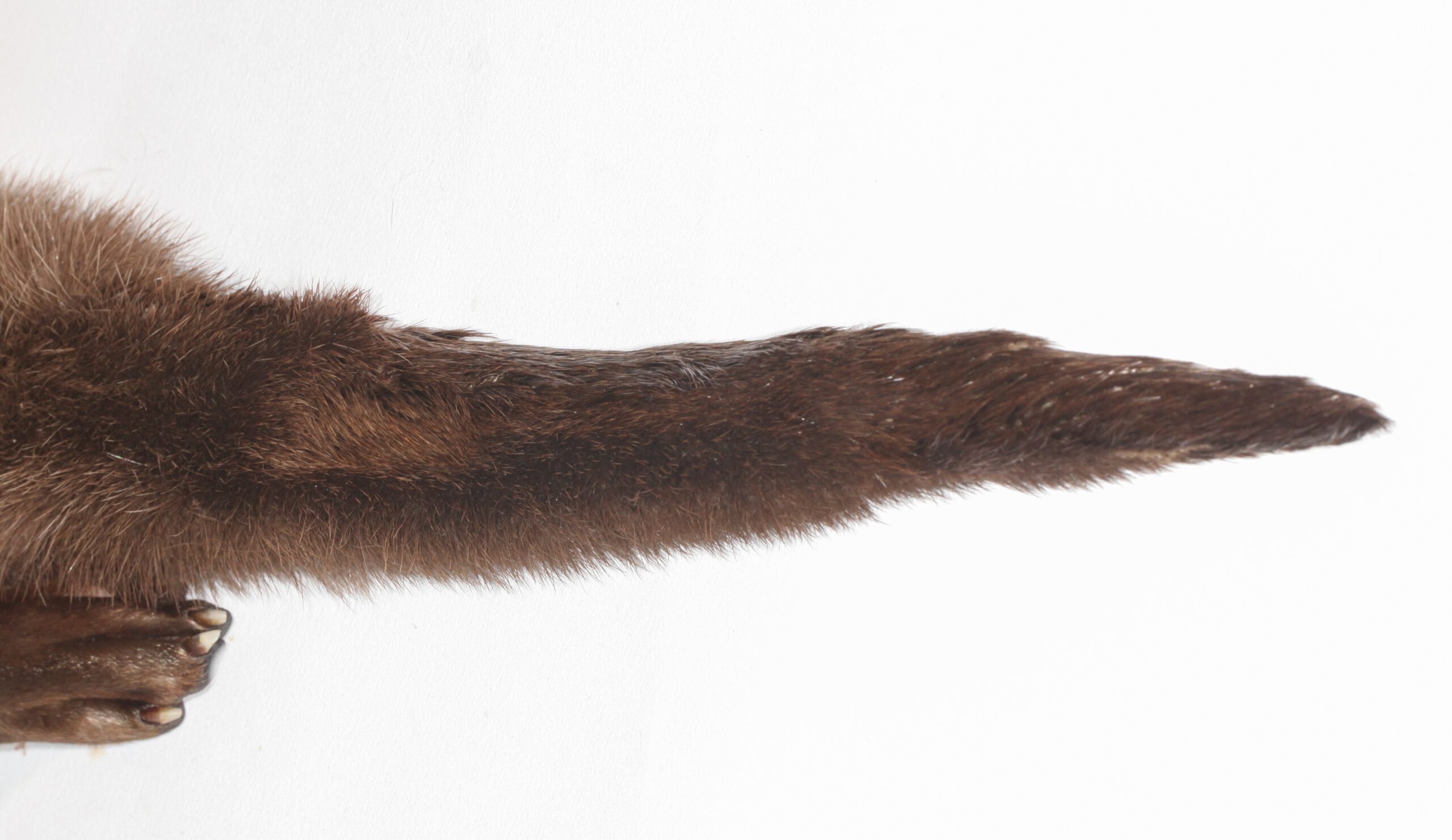
Sensory capabilities
Although the size of their eyes is not very impressive, otters can see under water using a special adaptation. Their eye lens is more spherical than a human’s eye lens, which makes otter eyes more suitable to the refraction index of light in water, which is also found in most fish. This results in a sharper view under water, where humans experience blurry vision. A transparent third eyelid, also called nictitating membrane, protects the eye against struggling prey or harmful objects. A light reflecting membrane in the eye (the tapetum lucidum), typical of the eyes of many nocturnal species, helps otters to navigate at night.
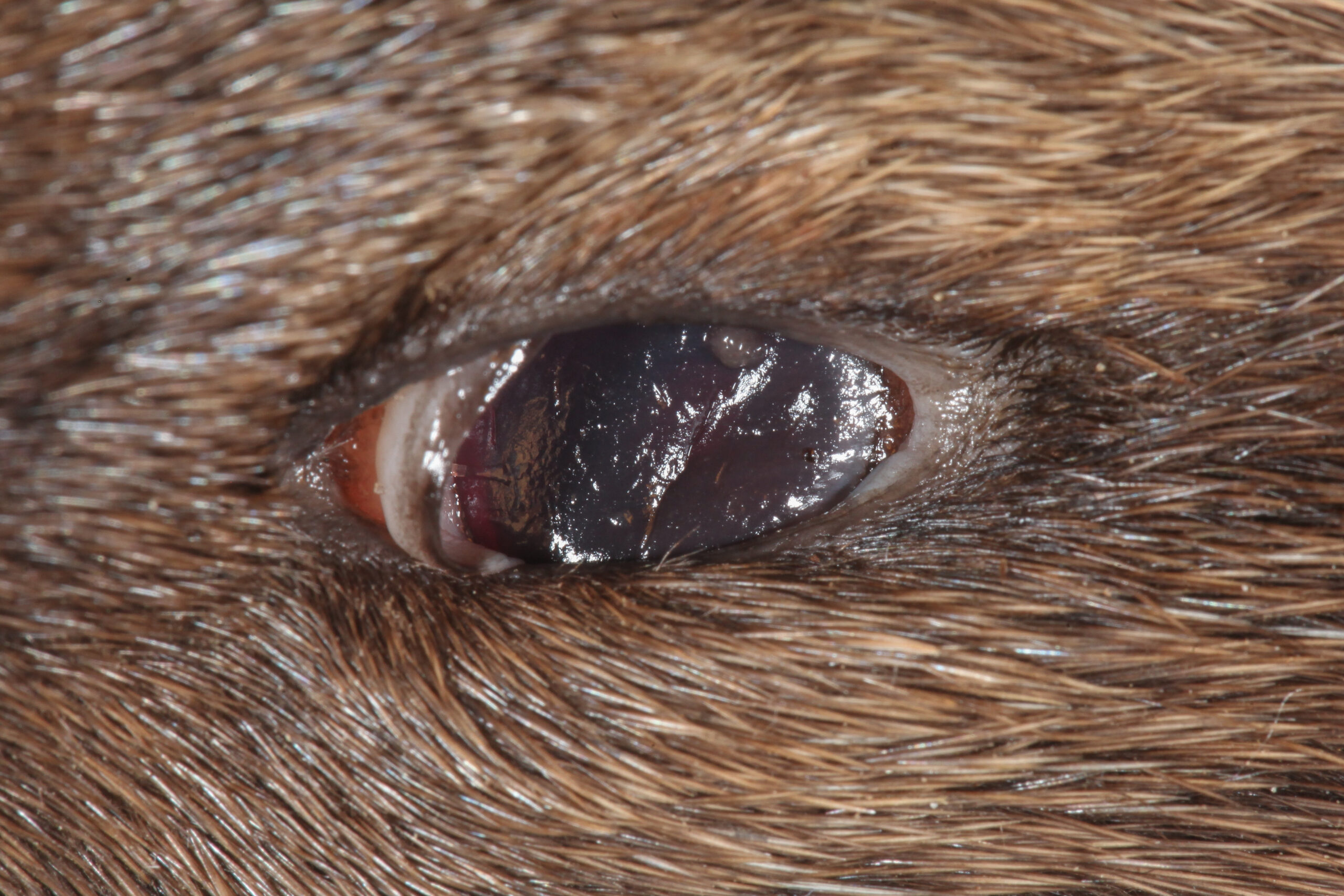
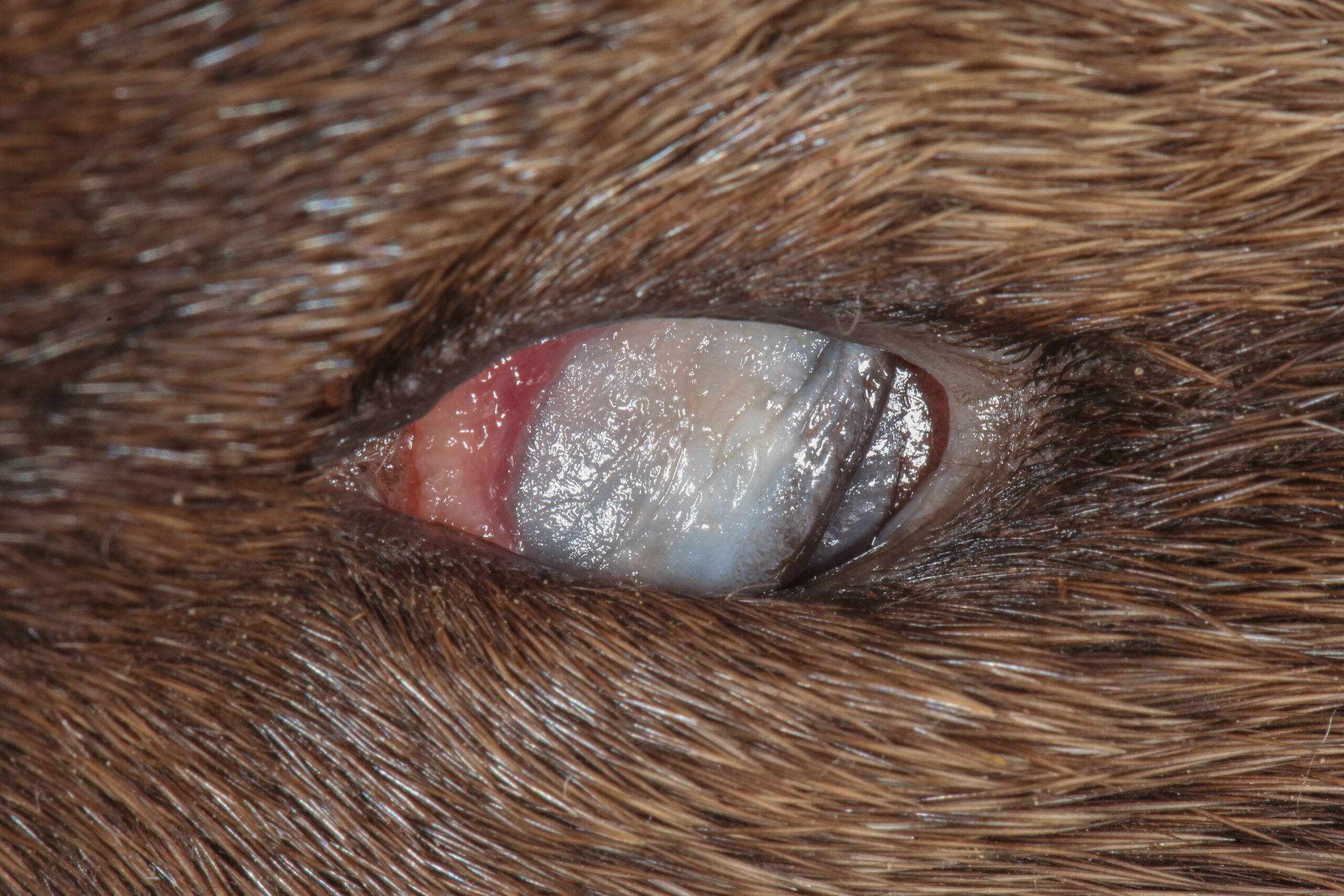
The ability to smell seems incredibly well-developed in otters, which is indicated by the size of the brain region primarily processing information of smell (the olfactory bulb). An otter’s olfactory bulbs are enormous relative to the rest of the brain. Smell in otters is important from a social perspective: territory boundaries are flagged by rubbing their scent glands on objects and otter poo (‘spraints’, see photo) also gives away information to other otters, for example about reproductive status. There is no evidence that otters use their smell to detect prey under water, as for example Water Shrews do.
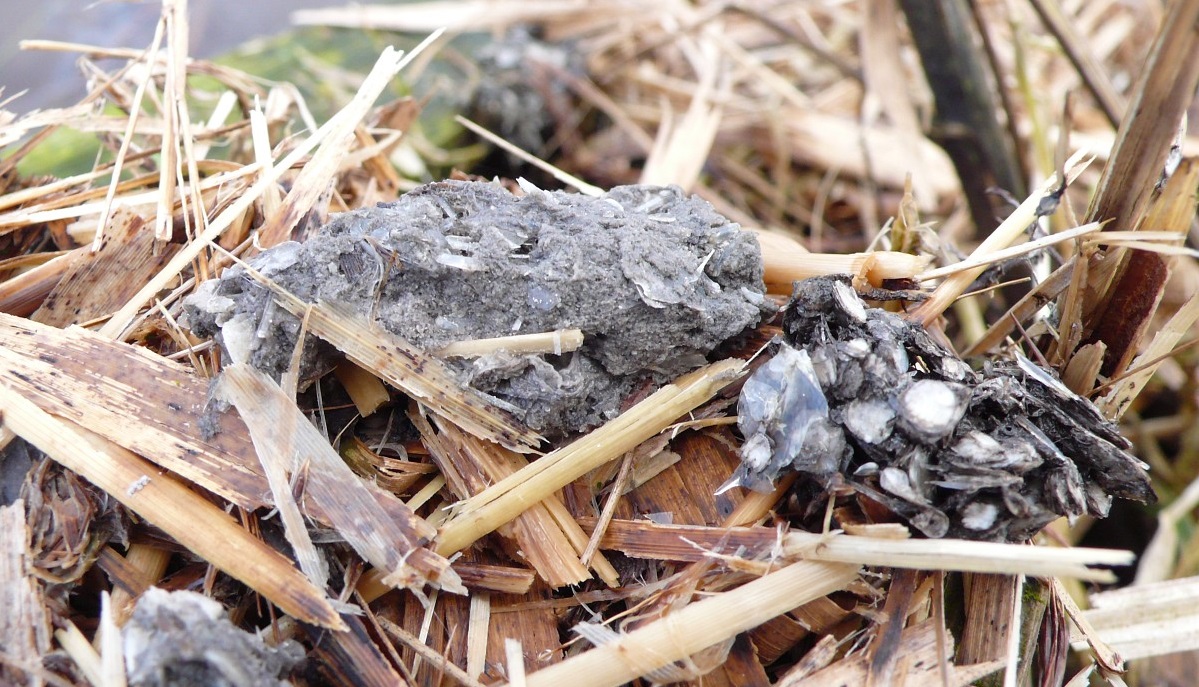
The muzzle, eyebrows and even the chin and corners of the mouth of otters are equipped with strong whiskers, providing them with information about water currents, prey vibrations under water and dimensions of burrows, shelters or their den, called a holt. Being mainly nocturnal hunters, eyesight is typically limited and under these conditions the whiskers provide the predominant sense for locating prey.
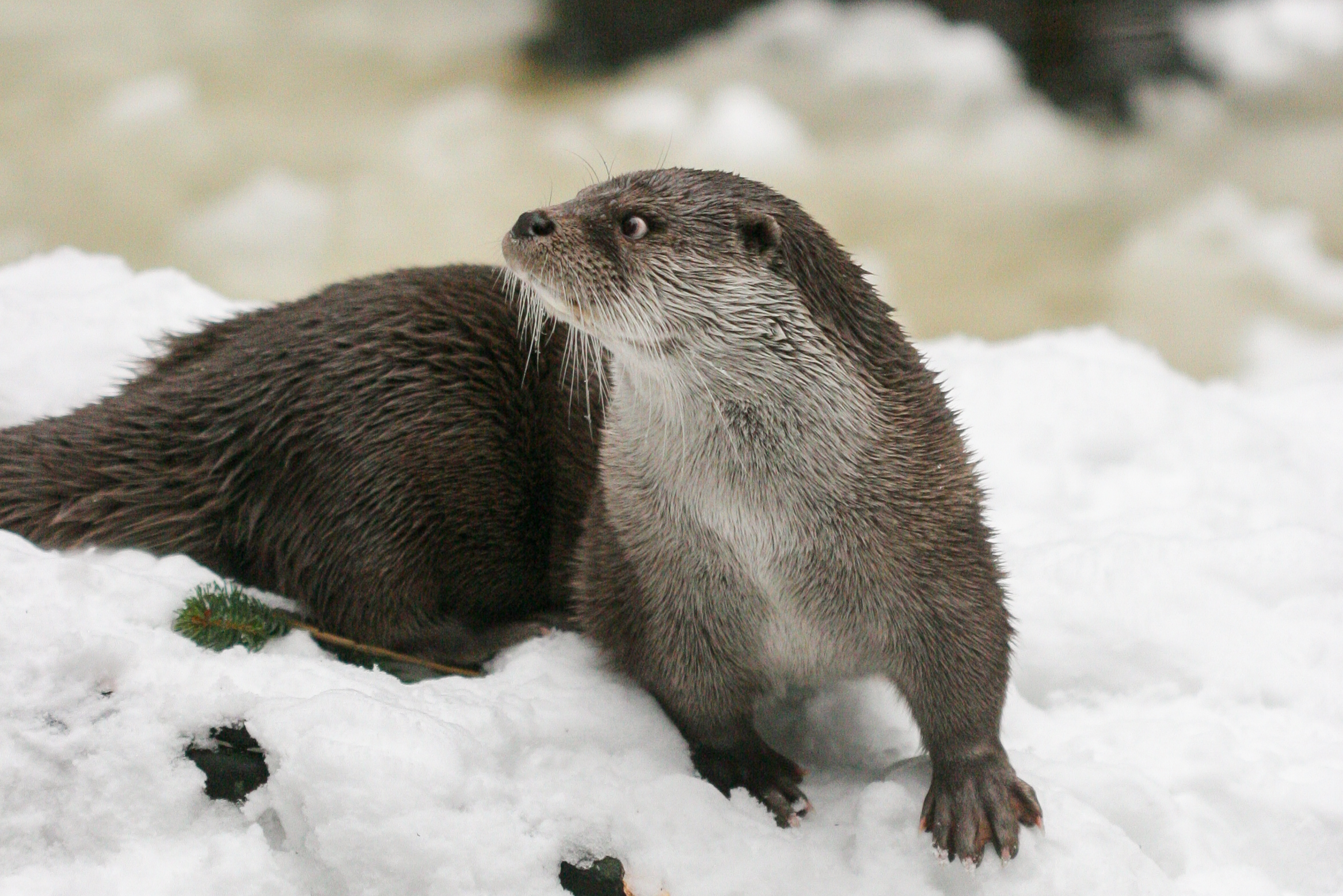
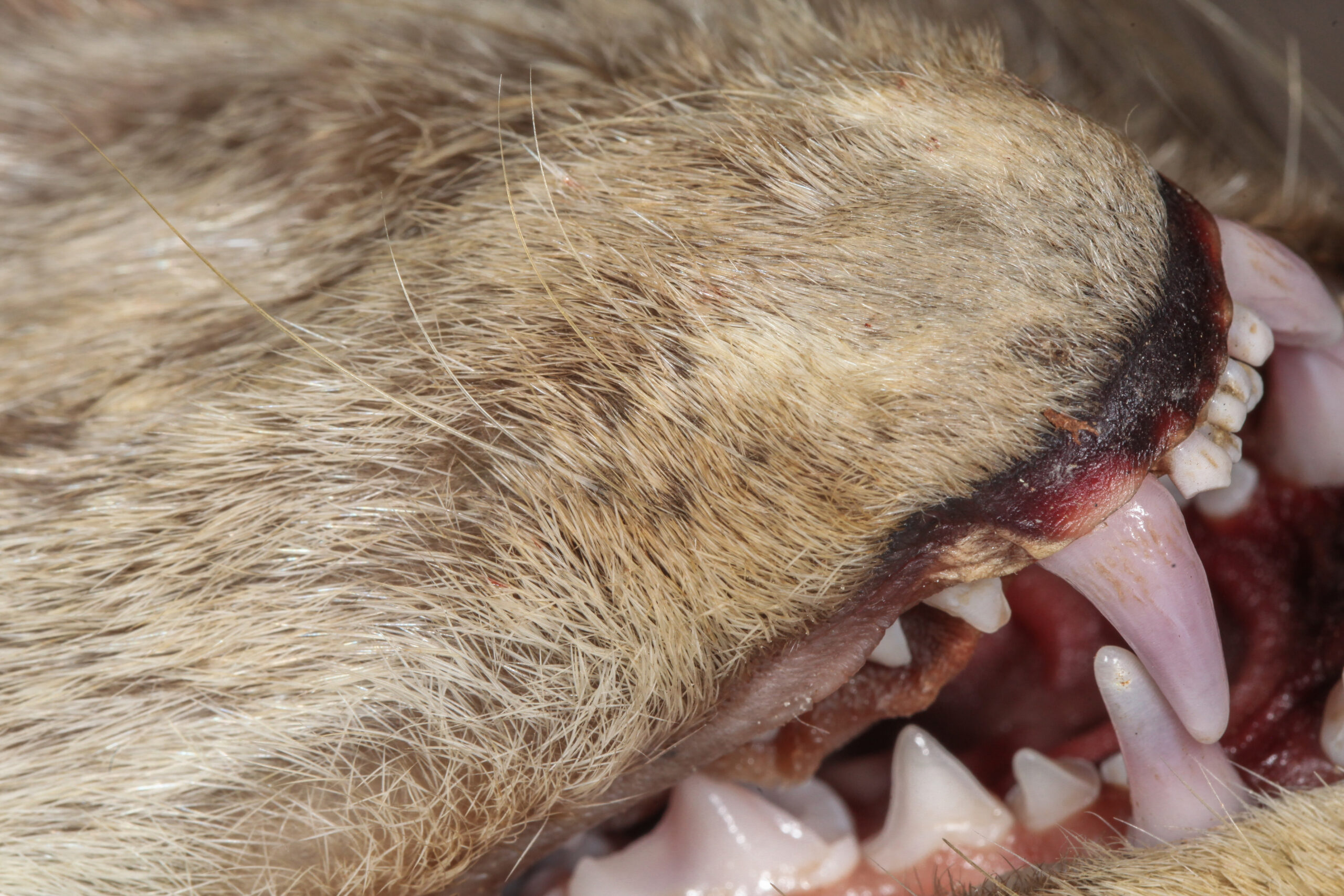
Scuba lungs
Otters face the challenge of functioning both on land and in the water and their breathing apparatus has to be adapted to both. Just before submerging the otter replenishes its oxygen reserve by taking a deep breath. To spend more time actively searching for food underwater otters have a very large lung volume, about twice as large as most similar-sized terrestrial mammals. This is the result of the angle and shape of their ribcage and connections of the diaphragm, which enlarge the chest cavity, and therefore long volume, significantly. These scuba lungs give otters enough oxygen reserves to stay under water for about 8 minutes, whereas an average human would not stand longer than 2 minutes.
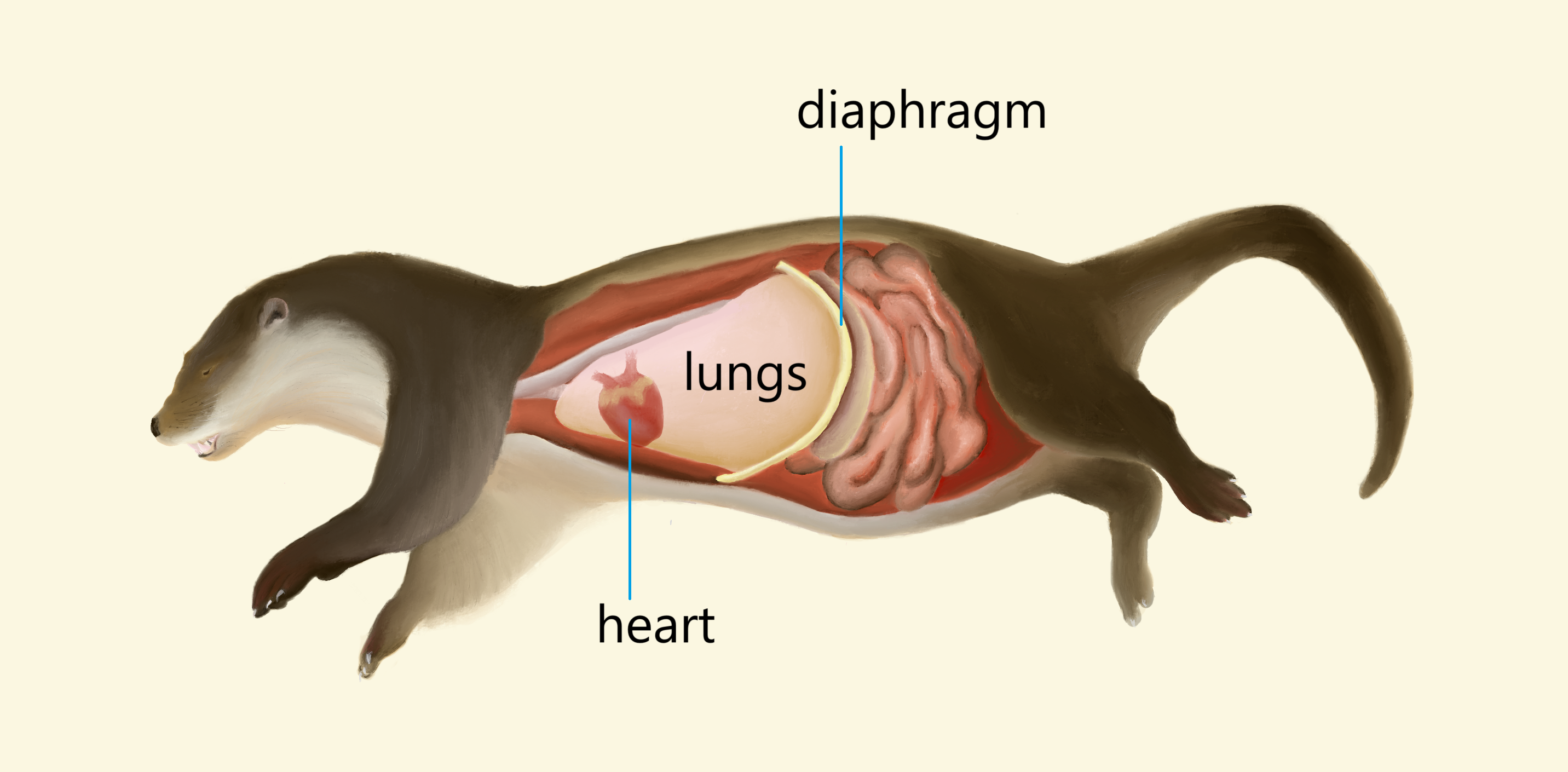
Furry versus fatty
Most marine mammals, like Harbour Seals, spend nearly their entire lives in the water and use a thick fat layer to stay warm. Otters have a very low fat percentage and have extremely dense fur to stay warm instead. The outer fur consists of thick, long hairs, which allow water to drip off when coming out of the water (or in rain). Below this layer, a downy fur layer is hidden, which can hold up to 50.000 hairs per square centimetre (in comparison, humans have an average of 100.000 hairs in total on their head).
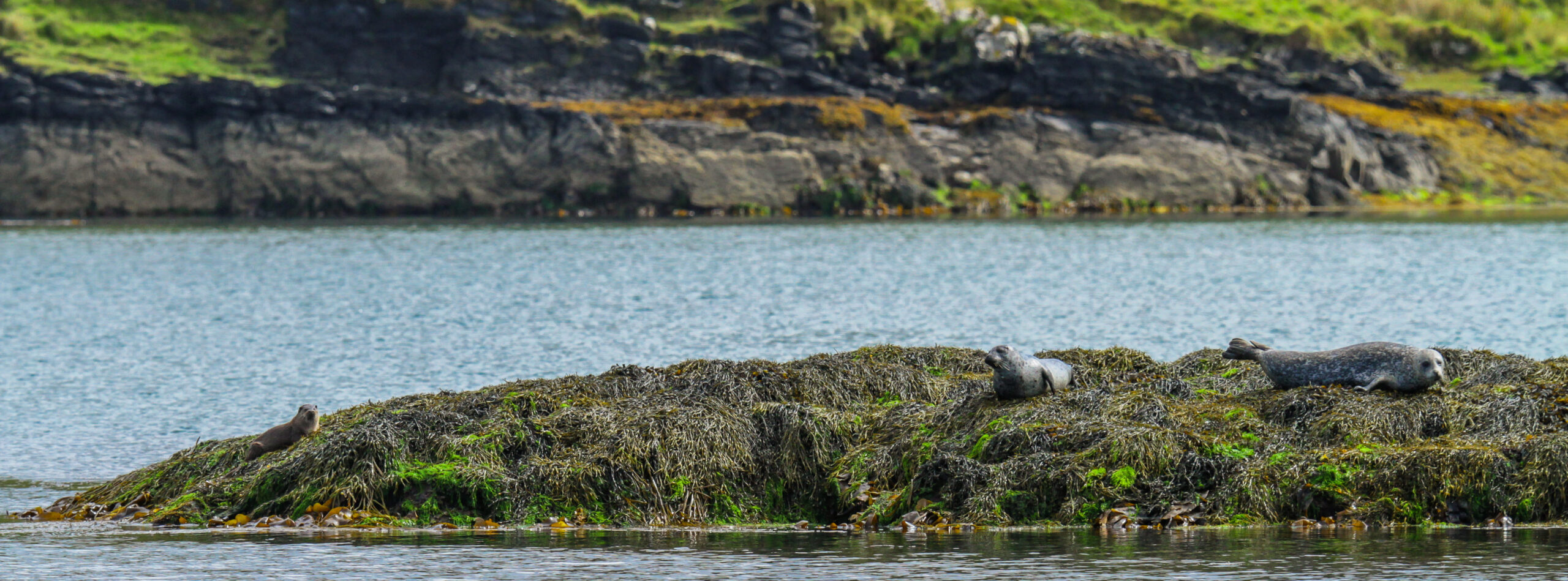
The high density of hairs in this layer prevents water from penetrating through to the skin. Similar to the downy feathers designed to trap air and insulate birds such as ducks, otter fur captures tiny air bubbles, which add to form a heat-insulating layer. Therefore, otters spend much time of the day preening and washing in order to keep their fur in a good condition. Thanks to their dense fur otters can remain active in their territory throughout the winter season, and hence do not hibernate.
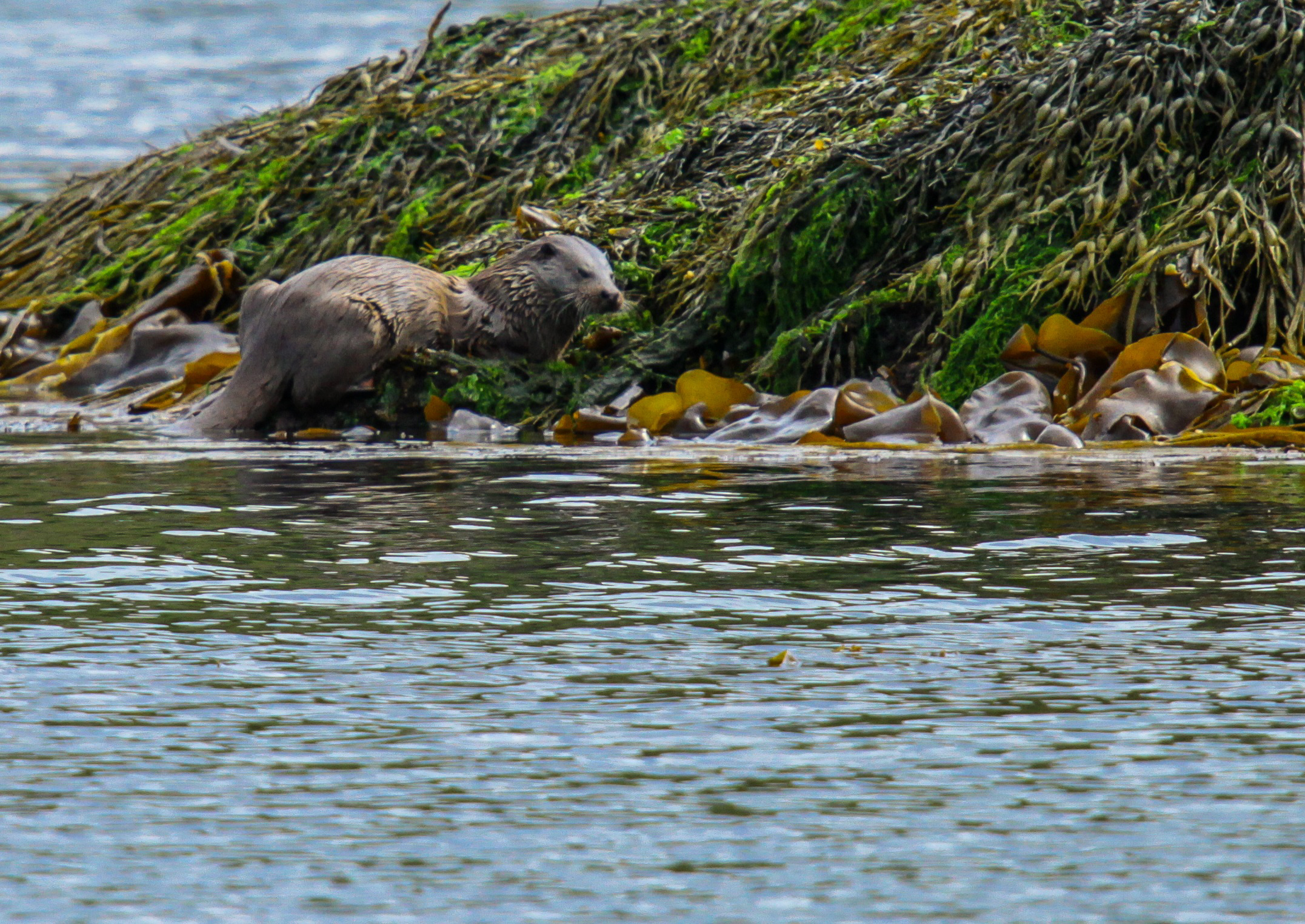
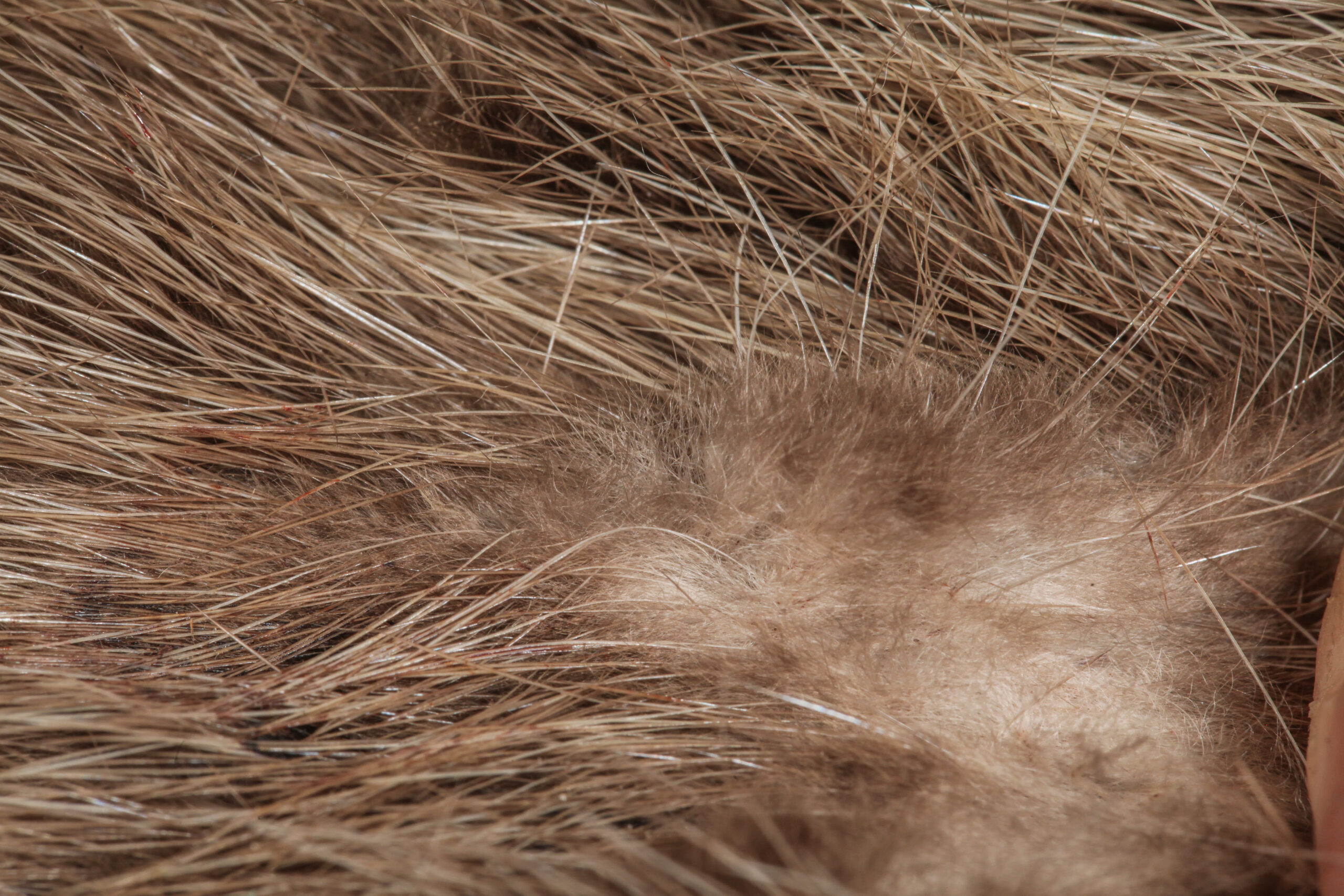
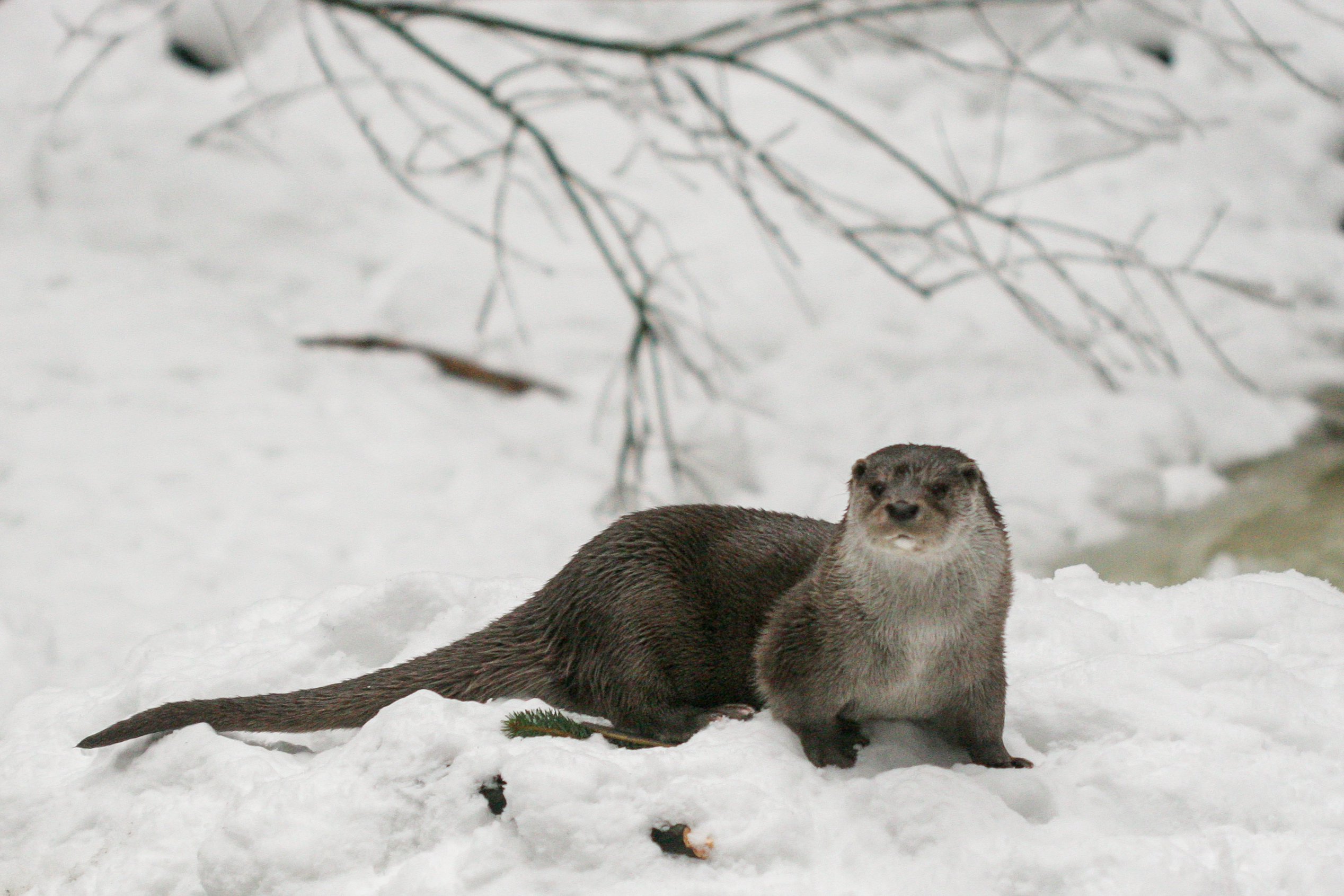
A body designed to swim
Both the fore- and hindlimbs have webbed toes, but the webbing in the hind feet is stronger developed, as these are mainly used for propelling under water. The webbing also provides a large surface to create grip when climbing out of the water and onto slippery shores. The advantage of having webbed feet may also be reflected in some land-dwelling martens, like Pine Martens, which seem to use the (smaller, but significant) webbing between their toes for extra grip when climbing trees.
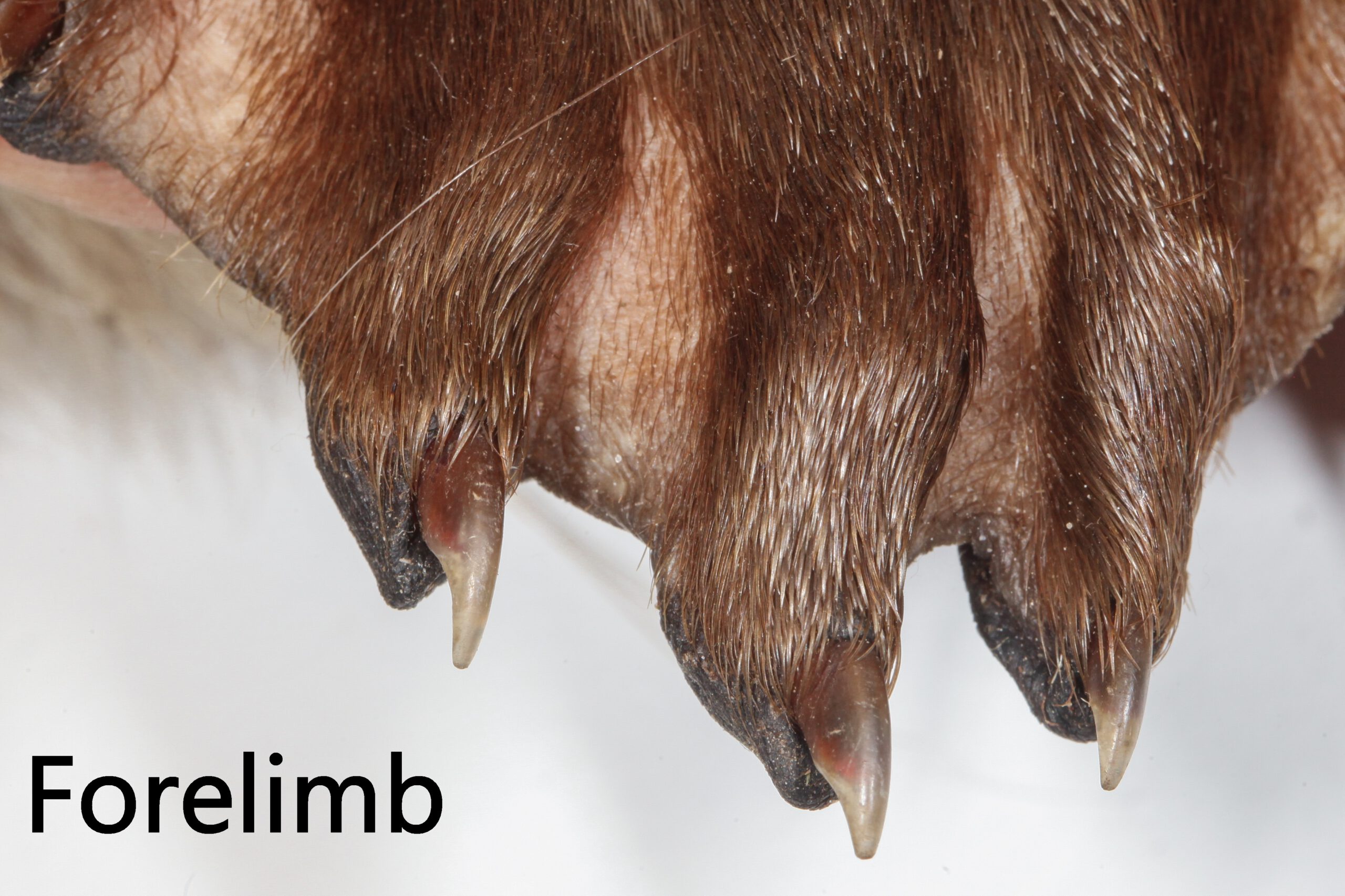
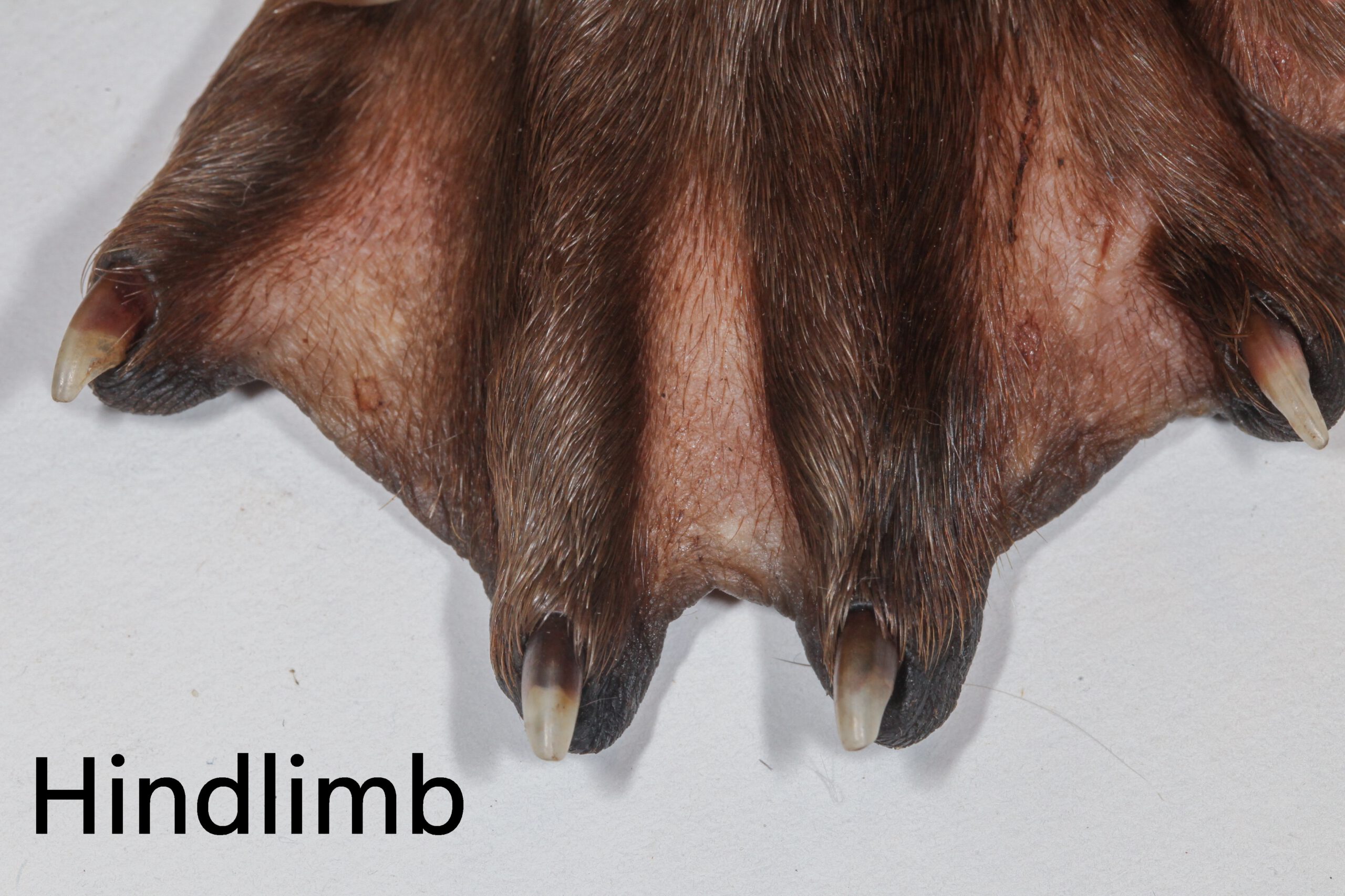
Continue reading
Fast and sudden movements under water require strong limb, neck and tail muscles in order to keep the body on course. Although the hindlimbs are mainly used in swimming, the forelimbs are equipped with much stronger muscles than the hindlimbs. This probably relates to the power the front feet need to excavate a burrow, hold and manipulate large prey and to climb back ashore. The neck has very powerful muscles, designed to catch prey with their mouth (as they typically do), carry large prey on land, and to keep the head in line with the body while swimming.
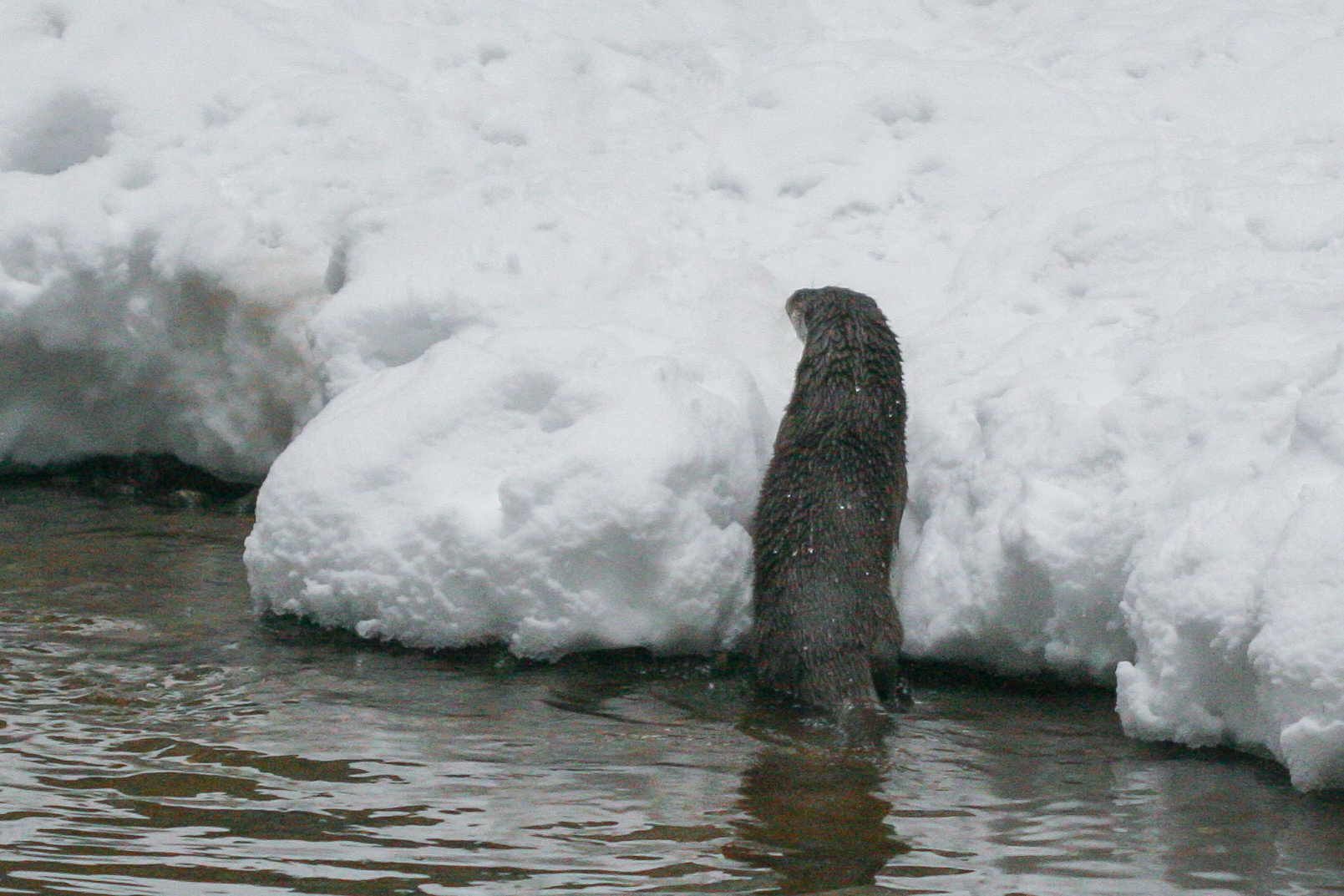
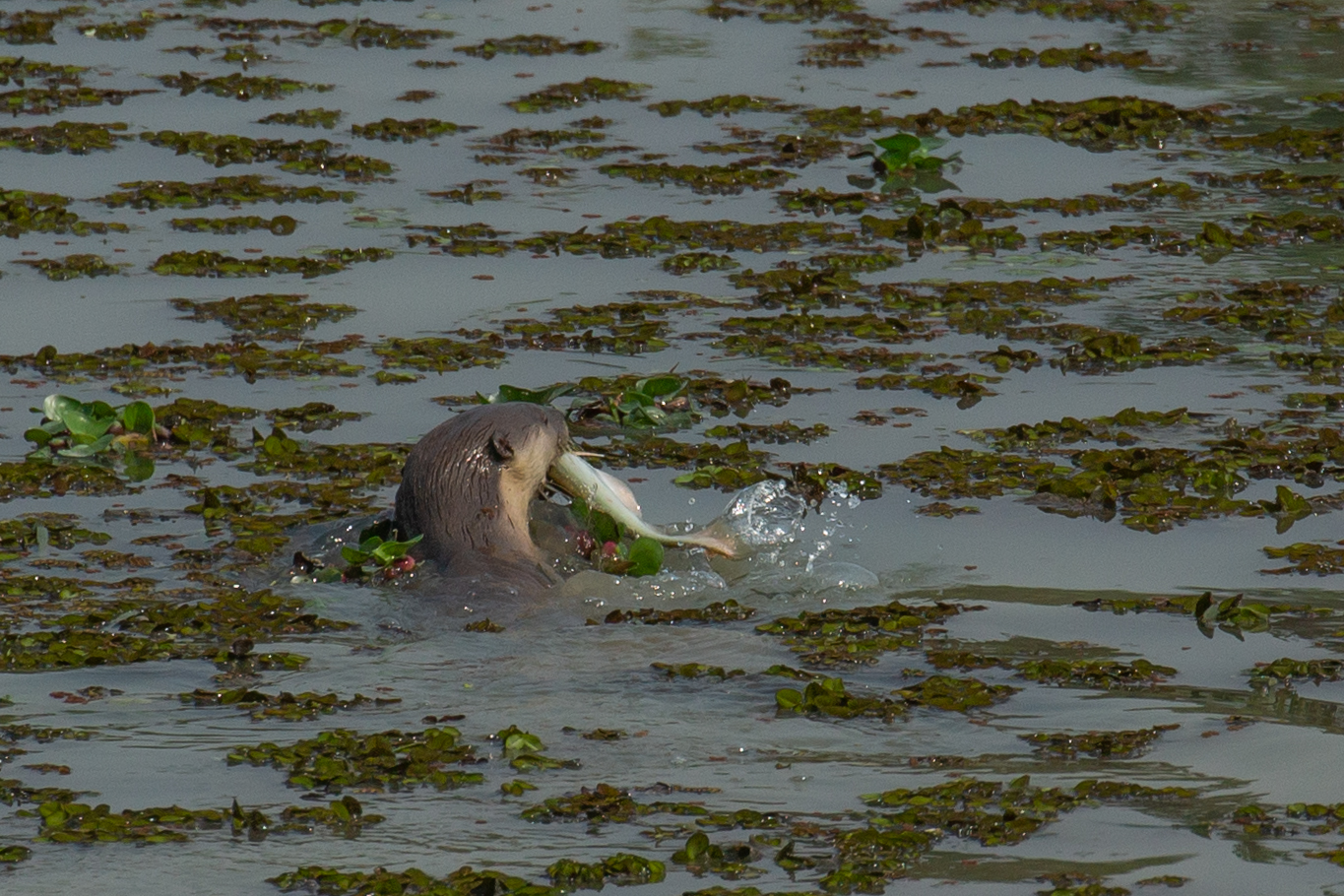
The lower mandible is short; the jaws are equipped with sharp teeth and powerful muscles for a strong bite. The jaw muscles run from the top of the cranium towards the lower mandible in two parts, of which one connects to the upper ridge of the mandible projection and the other on the inside of the projection, both closing the mandible firmly, further supported by the strong cheek muscles. The molars are carnassial, which means the upper and lower molars slide along each other in order to cut food in pieces that can be swallowed. The stomach can significantly reduce lung volume when holding a large meal, which could restrict diving time.
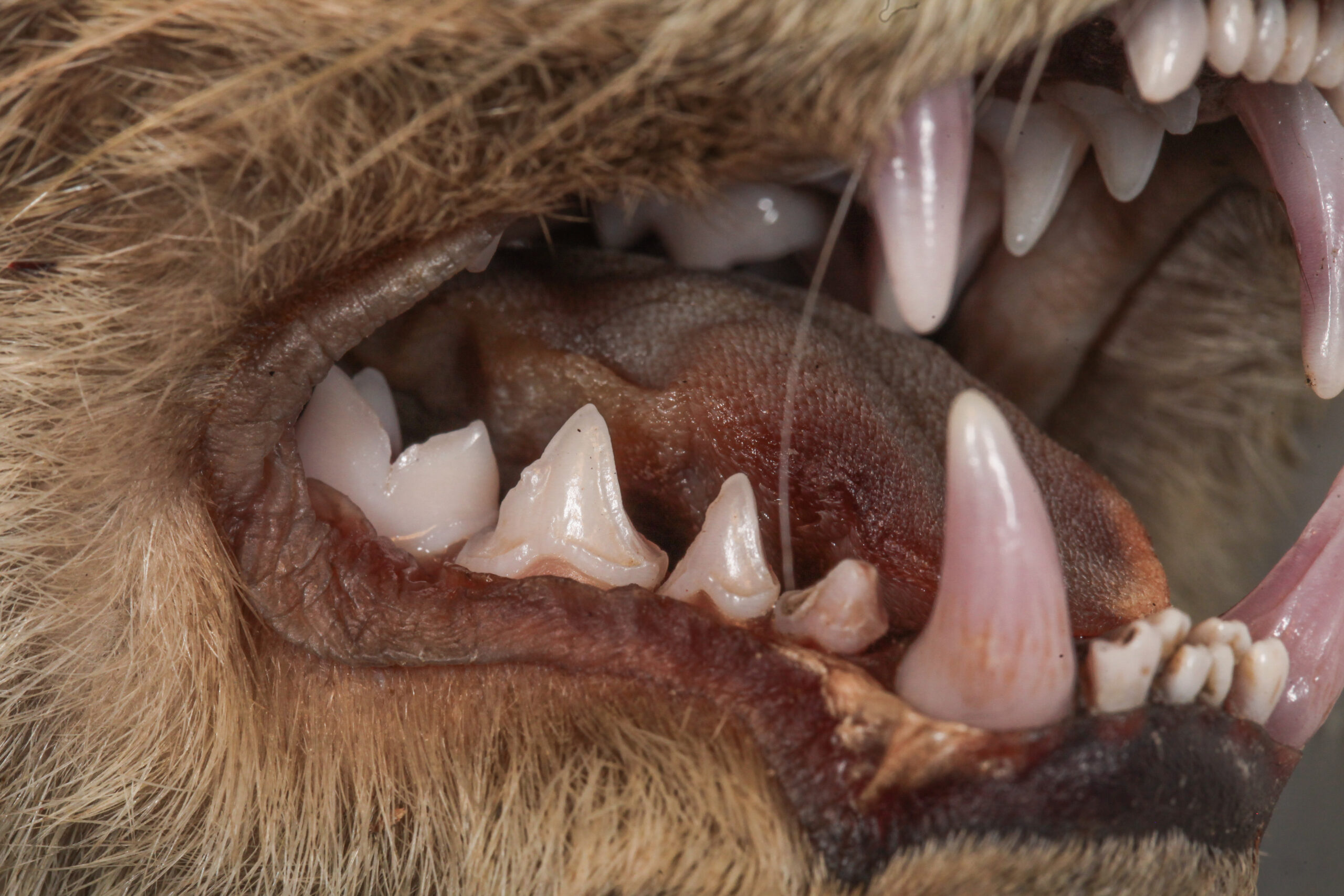
Surprisingly, the intestine is relatively long, similar to other fish-eating animals, like Harbour Seals, Osprey or White-tailed Eagles. Fish consist of proteins for the largest share, which are easier to digest than fatty meat or plant material, so one would expect to find relatively short intestine with a fish diet. However, diets only comprising fish may result in nutritional deficiencies, for instance of B vitamins and iron. Perhaps the long intestine in fish eating animals serves to absorb as much as possible of these compounds from ingested prey.
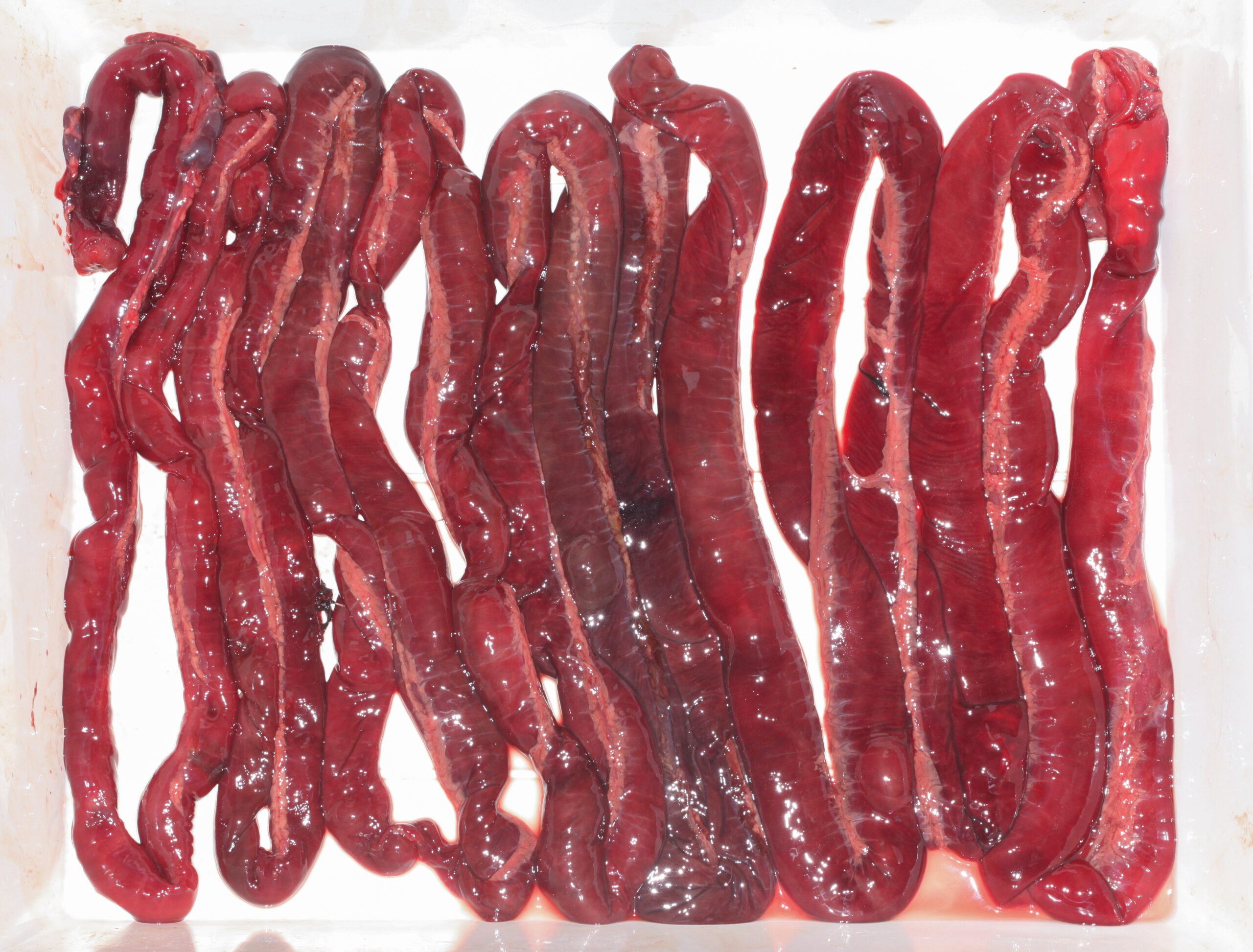
Comeback
Otter numbers in Europe dropped dramatically in the previous century due to several factors, including habitat loss, hunting, inadvertently being caught in nets and traps, and lowered water quality in much of its range. Many waters have become enriched with nutrients, which resulted in explosive growth of algae and water plants. Over time, these waters became murky, with large fluctuations in dissolved oxygen levels, restricting fish and other animals to live in these environments. In the Netherlands otters have even become extinct and were reintroduced with success several decades ago, following general improvements of water quality, such as lowered phosphorous concentrations, and reductions in commercial fishing in fresh water lakes.
